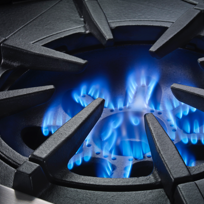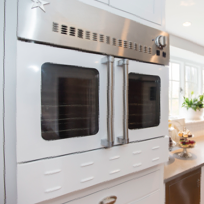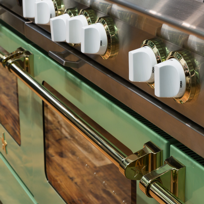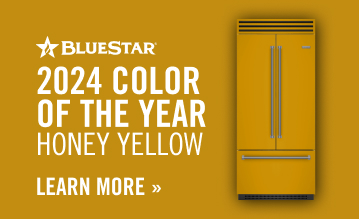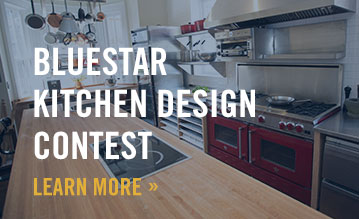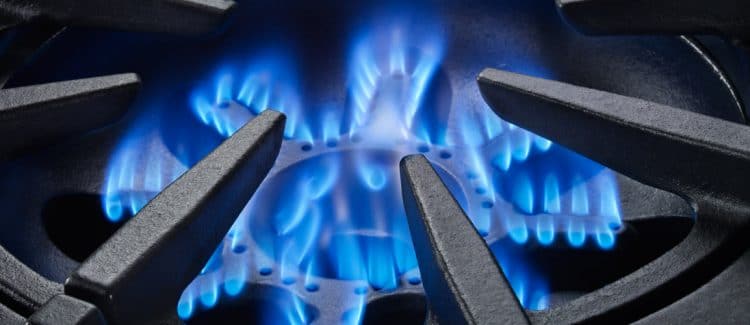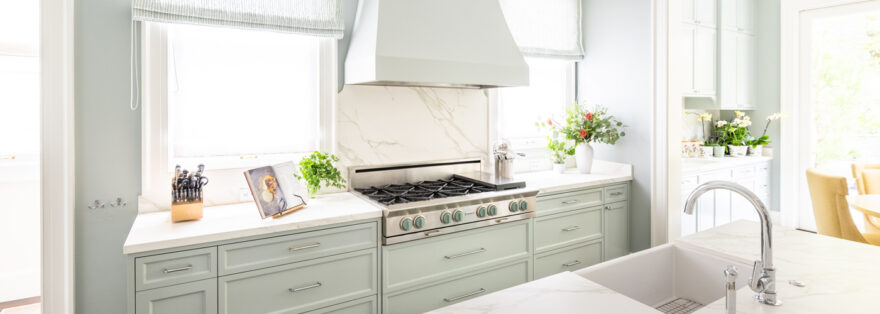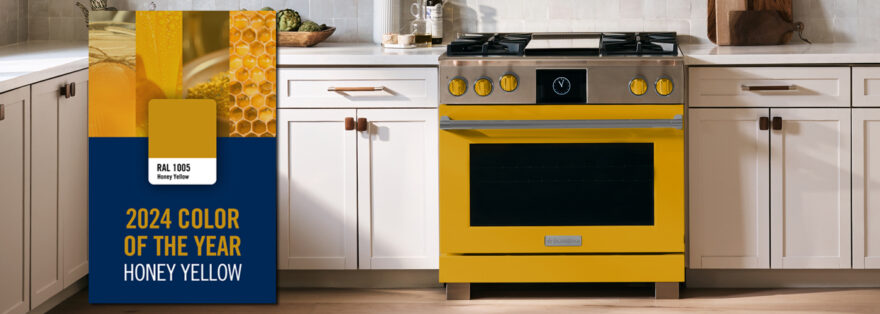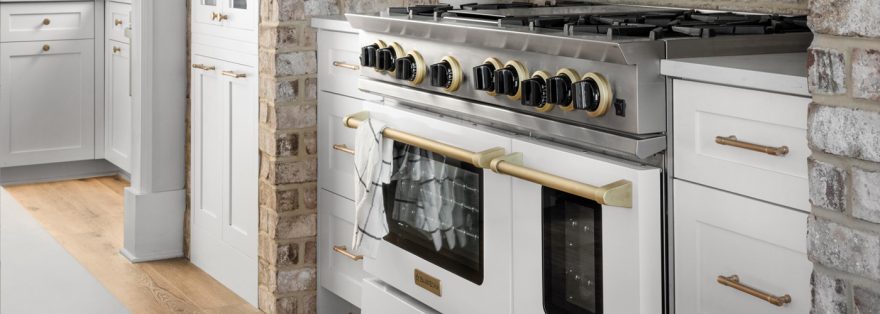Current kitchen appliance trends, from colors to textures to a vintage style that customers crave.
If a return to physical books, vinyl records, and Polaroid cameras among many modern consumers are any indication, there’s something comforting about going retro in a hyper-connected digital age. Often, this yearning also extends to kitchen appliances, from candy-colored vintage espresso machines to toasters to the popular Smeg USA refrigerators currently housed in Ace Hotel rooms across the country.
Big Chill, a kitchen appliances manufacturer offering a suite of 1950s-style refrigerators, ovens, stoves, dishwashers, microwaves, and more, is another company giving the tastemakers what they want: an elegant design fusion of the past, present, and future. Likewise, BlueStar, which specializes in professional-grade, high-performance refrigerators, ranges, and induction cooktops, provides an eclectic array of retro-inspired colors and other customizations to fit each end-user’s unique sense of style, in addition to specific cooking, baking, and food storage needs.
To learn more about these design concepts and trends, appliance DESIGN spoke to Eliza Sheffield, president of BlueStar, and Orion Creamer, founder and president of Big Chill.
appliance DESIGN: Eliza, what are of the big design trends you’re seeing when it comes to kitchen appliances like refrigerators and stoves?
Eliza Sheffield: We have been seeing neutral colors in kitchens, from grays to varying shades of white. While dark finish cabinets are still popular, these creamy, neutral shades make for a great backdrop on which to introduce pops of color—whether that means in small housewares or textiles or in larger appliances, such as those offered by BlueStar.
We see people going for sharp contrast. With neutral cabinets, a glossy red or cobalt blue range can stand out among subdued cabinets, or even a bold color like green can look elegant against white cabinets.
It also is clear that metallics are still trending: brass, pewter, copper, textured and hammered metals, and also industrial metals, such as forged black iron, steel, etc. You see these accents especially in kitchen hardware, plumbing fixtures, and even as accents on major appliances in oven handles, knobs, and trim, plus as featured on the hoods and stoves themselves.
appliance DESIGN: For the modern consumer, customization is huge. But that can lead to problems, like what psychologist Barry Schwartz called “the paradox of choice.” How does BlueStar tailor appliances to suit individuals’ needs, but without providing too many options that might overwhelm them?
Sheffield: BlueStar is a company that’s been deep into color for years. We were one of the first major manufacturers to offer color—today, our customers can choose from over 750 colors and finishes, and can match any custom color as well. We have some advice for those who just want to dip their toes into this color trend: Bring in a little color at first by switching out just the knobs on your BlueStar oven or cooktop to a brighter color. People are discovering that small bursts of color can make a kitchen pop, and there’s no more predominant accent than a range or a refrigerator.
Pops of color introduce flavor without a full-scale commitment to a single, bold color. A colored range can work independently as a “statement piece” or as a subtle backdrop, allowing cabinets to take center stage.
In addition to ranges, people are introducing color accents by adding distinct hues inside kitchen cabinets or using an open shelf concept to showcase decorative pieces. Another trend is an inclination toward matte, rather than high-gloss finishes, just like the Jet Black range.
To help simplify the selection process, we have an interactive website tool, “Build Your Own BlueStar,” that allows consumers to customize a new BlueStar range—and now, refrigeration—before buying.
appliance DESIGN: What colors and textures do you see customers responding to the most?
Sheffield: While stainless remains a popular premium finish, we’ve seen a rise in what we call “stainless fatigue”—it’s been around for so long that people are feeling that their kitchens are looking cookie-cutter, as opposed to the upscale, differentiated look that stainless always implied. Clients are telling design professionals that they do not want a kitchen that looks like everyone else’s.
At BlueStar, we have definitely seen color becoming more and more popular since we launched our palette of some 750+ colors more than a decade ago. Today, our top-selling colors are Ruby Red, Cobalt and Ultra Marine Blue, and Light Green.
We also are seeing great interest in our new Matte Color collection. With inspiration from Heidi Piron—founder of Heidi Piron Designs in Chatham, NJ, and the grand prize winner in our first annual Kitchen Design Competition—we developed a well-balanced collection of eight hues that includes bold standouts like Matte Red and classic, on-trend neutrals like Matte Grey. Signal W,hite is trending, as is Matte Black. We don’t believe that matte is a “trend” that will ever go away; it is an ideal look for appliances that is both understated yet design-forward.
In addition, BlueStar offers curated groupings of unique finishes to stimulate the design process, including the popular Precious Metals, featuring copper, pewter, and other metallics, as well as the gem-inspired Jeweltones and the award-winning Textures collection.
appliance DESIGN: Orion, how did the idea of merging mid-century style with more modern technology for Big Chill originate?
Orion Creamer: My aunt and uncle were building a beach cottage in California. They wanted the look of a retro fridge but didn’t want the hassle. The retro fridges were small, inefficient, and you had to defrost them monthly. Nothing else existed at the time, so they came to me with the idea of building modern fridges with retro styling.
appliance DESIGN: Which 1950s designs were abandoned or updated, and which were kept?
Creamer: We loved the look and feel of the vintage fridges we found, but there were a number of features that needed updating. The fridges in the 1950’s had locking doors; that was one feature we had to design out of the product. We also had to update and freshen up many of the 1950s colors to appeal to modern tastes.
appliance DESIGN: How do you keep your appliances looking “retro” while also up-to-date, and how do you stay competitive in an increasingly high-tech marketplace, now largely fueled by touchscreen-enabled and interconnected appliances?
Creamer: We try to keep the exterior “look” as clean as possible. Most of our customers aren’t looking for high-tech, interconnected appliances with touch screens. They want a modern, streamlined look without too much technology that will inevitably break down.
appliance DESIGN: Will Big Chill expand into other kitchen appliances or laundry machines?
Creamer: We’d love to eventually bring design and color to the entire home. Laundry is on our radar, for sure.




